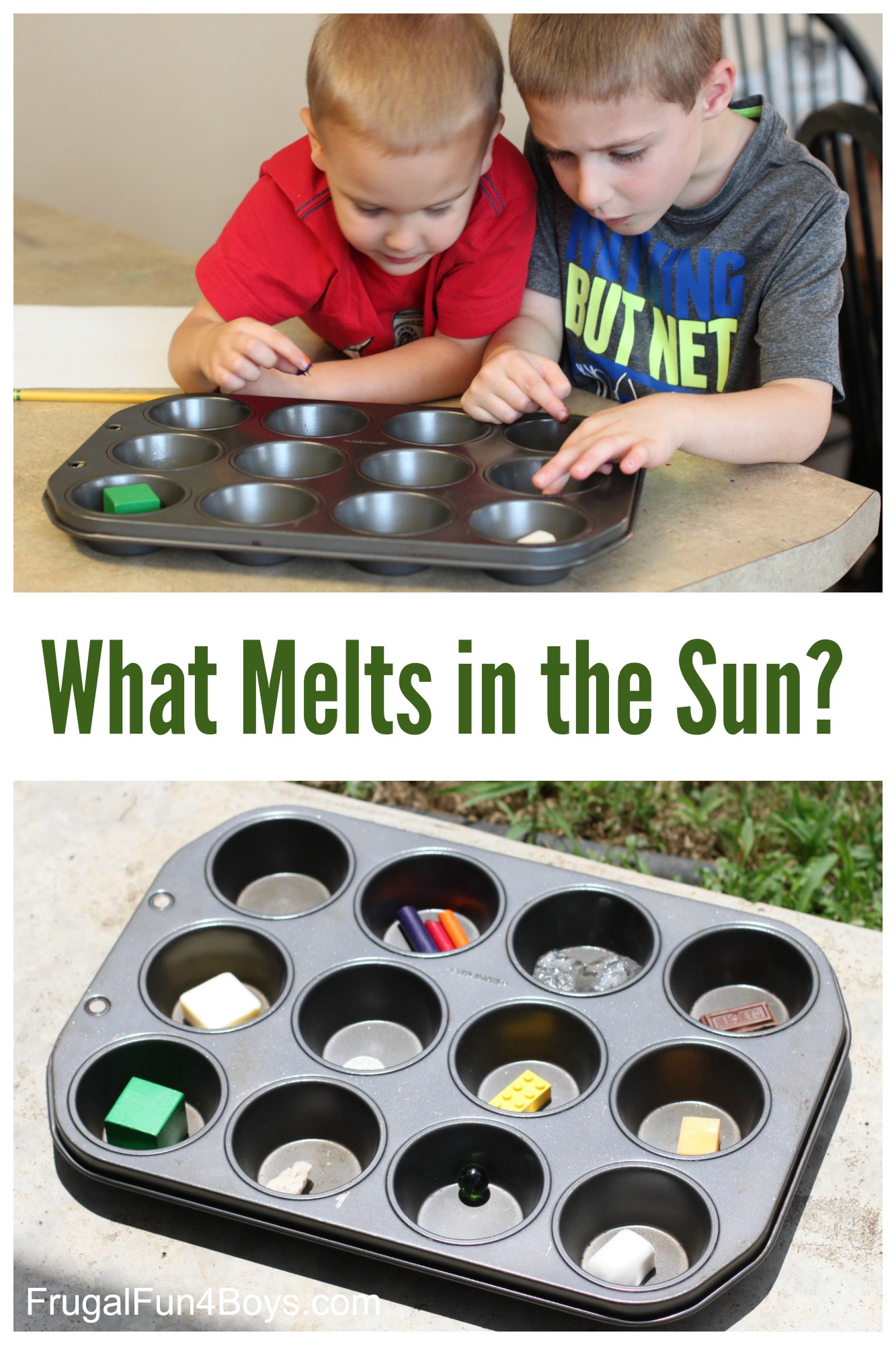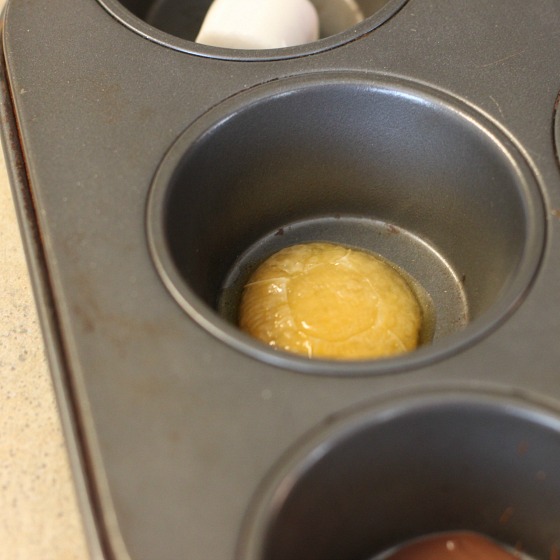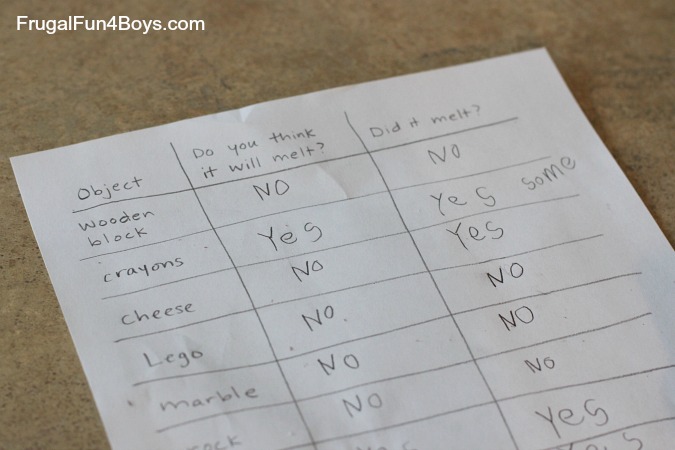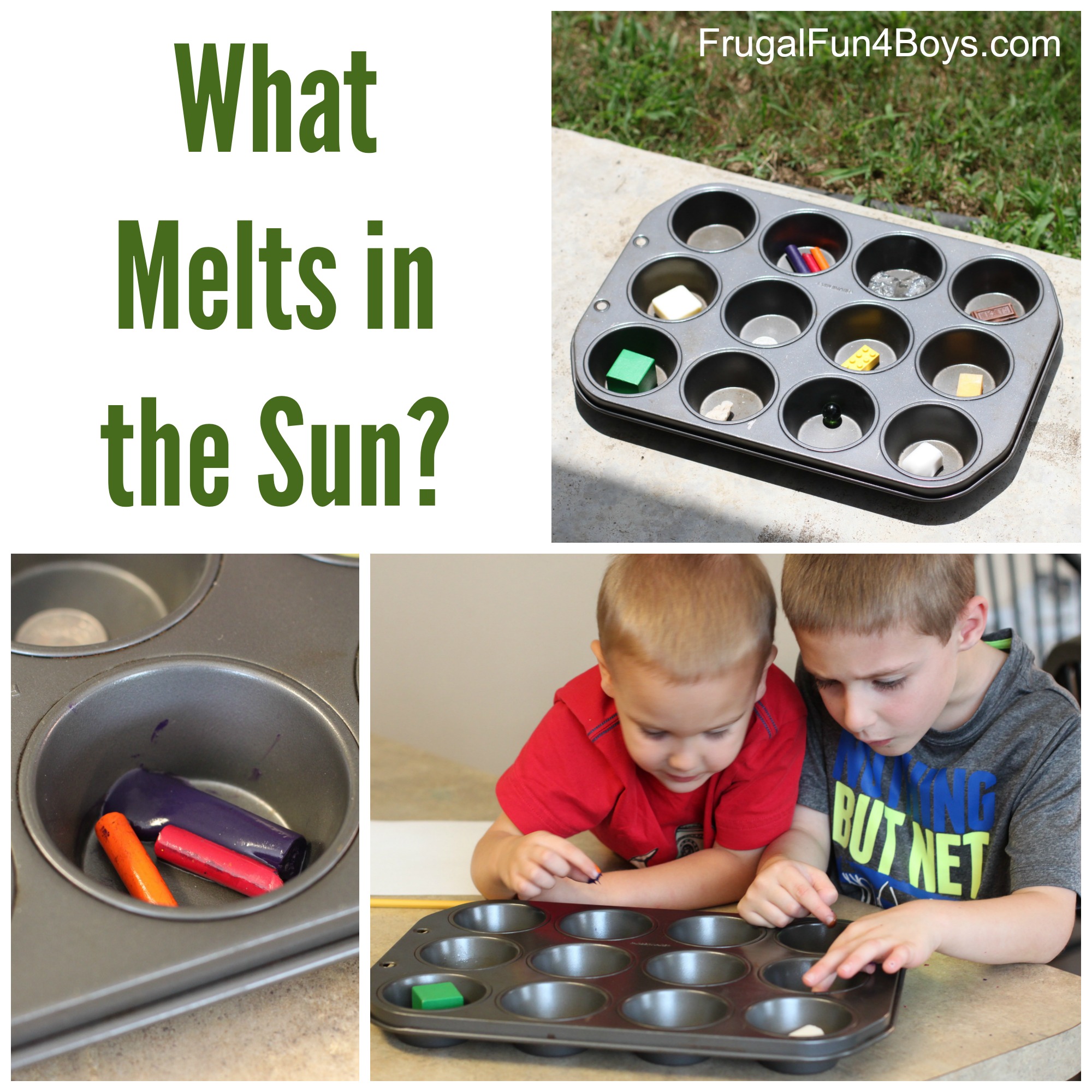Our rainy, rainy spring has finally ended and now it’s HOT! We hit the high 90’s yesterday (haven’t hit 100 yet, so that’s good). The younger boys and I took advantage of the hot sun and did a simple science experiment with melting.
This is SO easy and really interesting for the preschool and kindergarten crowd. My 8 year old also enjoyed it!
We grabbed a muffin tin and filled it with an assortment of objects. Owen (age 6) helped me choose things that he thought might melt or not melt.
We chose:
- A Lego (of course!)
- Ice
- A wooden block
- A rock
- Butter
- A cube of cheese
- A marble
- A quarter
- A square of Hershey’s chocolate
- Three crayons
- A cube cut off a bar of soap
We placed our tray in the sun and set a timer for 10 min.
After 10 minutes, the chocolate was a puddle! Owen just HAD to stick his finger in it to make sure it was melted. And then lick off the chocolate. The cheese looked different, but was still a cube.
Then the sun went behind the clouds.
When the sun came out again, we stuck our tray back out there and forgot about it. 40ish minutes later, the crayons had begun to melt, and so did the cheese!
I made a chart for Owen to record what happened. Before we put the muffin tin out in the sun, he guessed whether each object would melt or not. Then he recorded what really happened.
He and Jonathan were very serious about their investigations!
The one that surprised both of us was the bar of soap. Owen and I both thought that it would melt, but it didn’t melt even a little bit!
The Science Behind It:
All solids have a melting point – not just water! The melting point of water is 32 degrees Fahrenheit, but other substances have different melting points. The melting point of butter is 90 degrees F, so if it’s below 90 degrees it’s technically frozen – even though it is not cold to the touch. Another example – the freezing point of Jello is 50 degrees Fahrenheit, so if it’s warmer than 50 degrees it will melt. The quarter in our tray did not melt because we were nowhere near its melting point of 1,981 degrees F (a quarter is primarily copper). “So, closer to August then?” says my husband. No, we probably won’t get that hot, even in Texas! But we might be able to cook eggs on the sidewalk – we’ll see!








4 Comments
Julie Aug 8, 2015
The 2 little boys I have this summer will get a kick out of this.
Rachelle Hughes May 5, 2016
Weekend with Wendell by Kevin Henkes would be a great book to pair with this activity as Wendell leaves crayons in the sun and they melted. When we did this with 3-5 year olds, they found tge sunniest spot on the play ground and placed the crayons on a cookie sheet. An interesting twist was that the yellow crayons melted way faster than any other color and more completely.
Annette Jun 24, 2020
Thank you for your many great resources! We are using them weekly this quarantine summer! We are trying this experiment today and love all your creativity. Thank you!
Tonya Peters Jul 25, 2023
These are great ideas - thank you.
Post a Comment